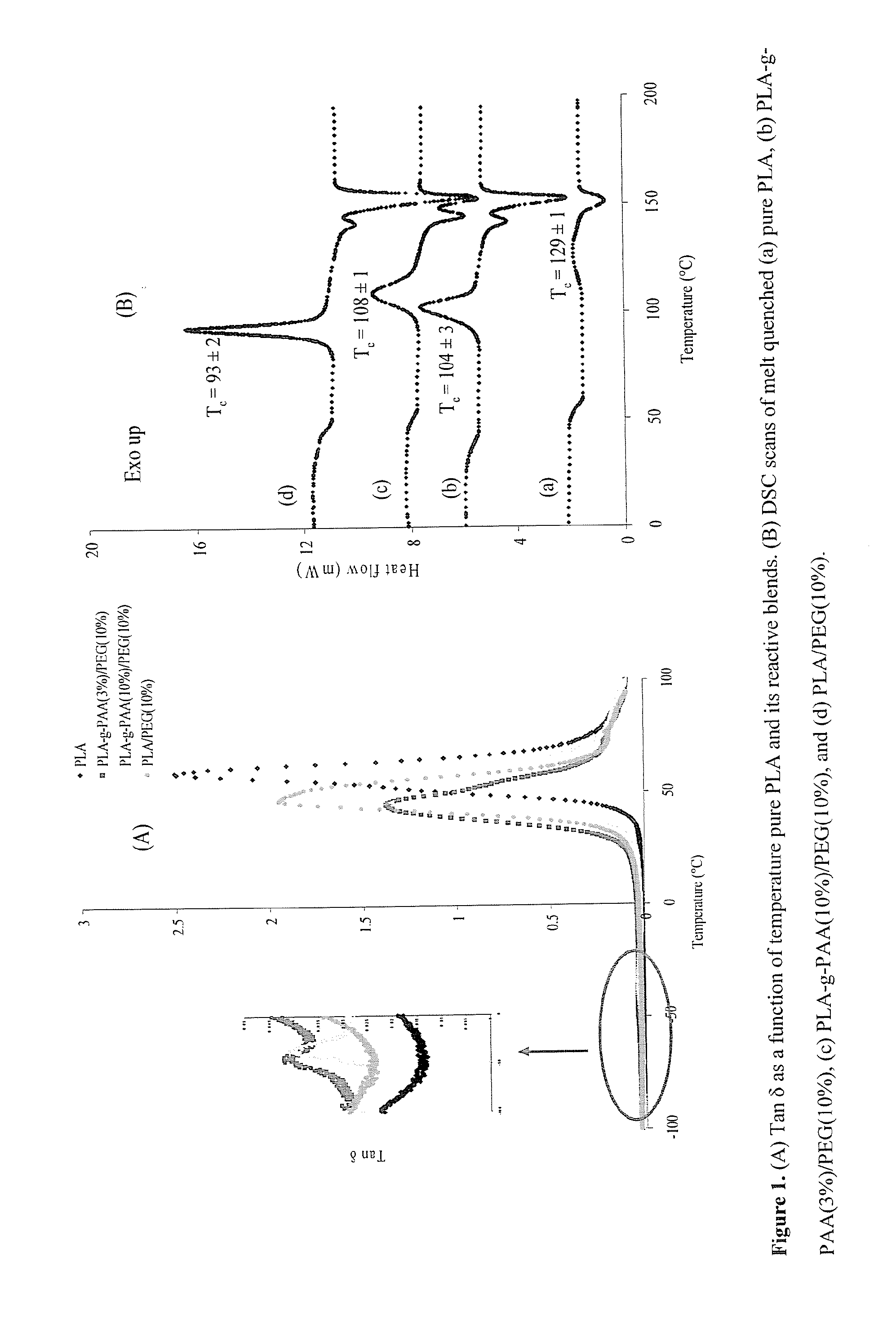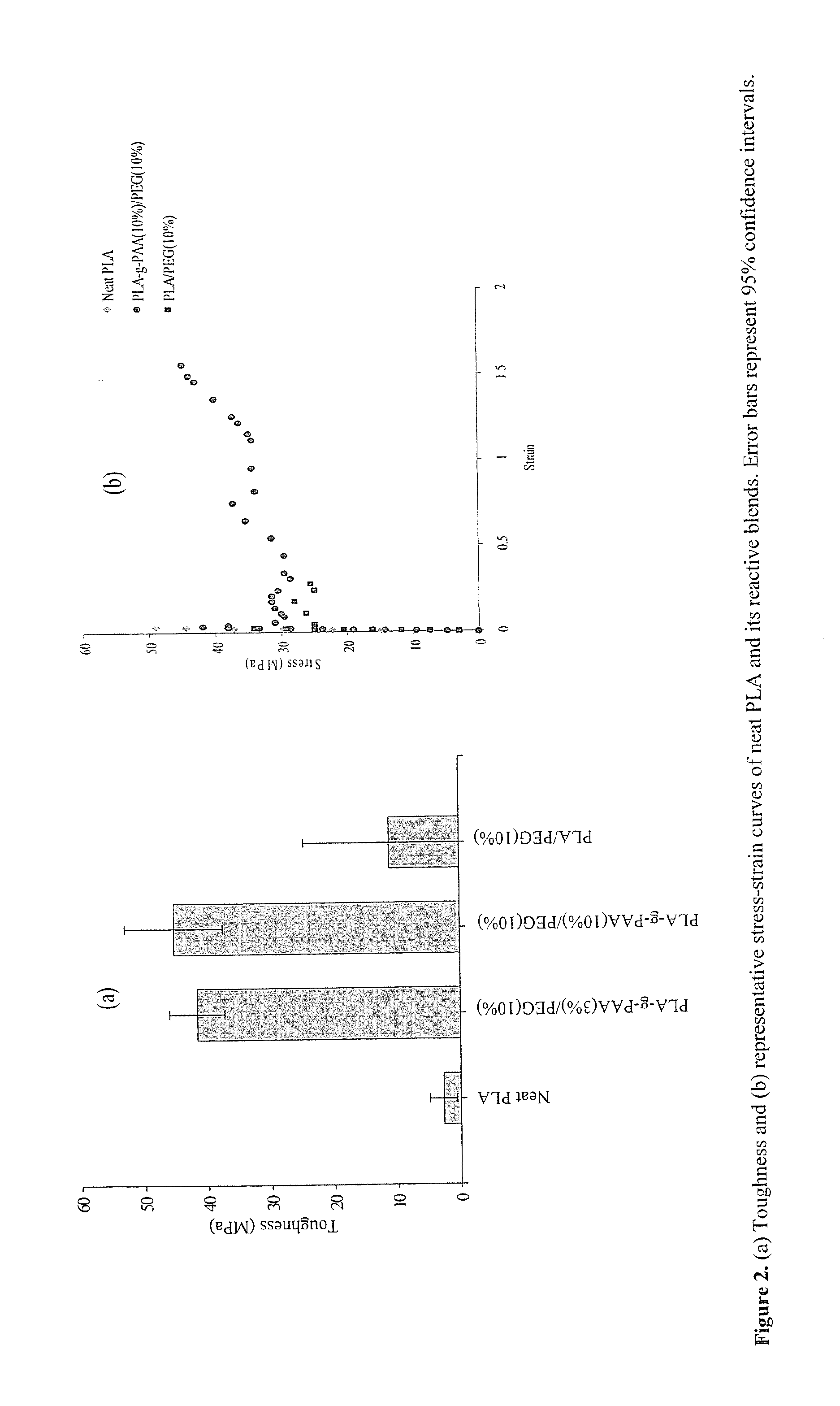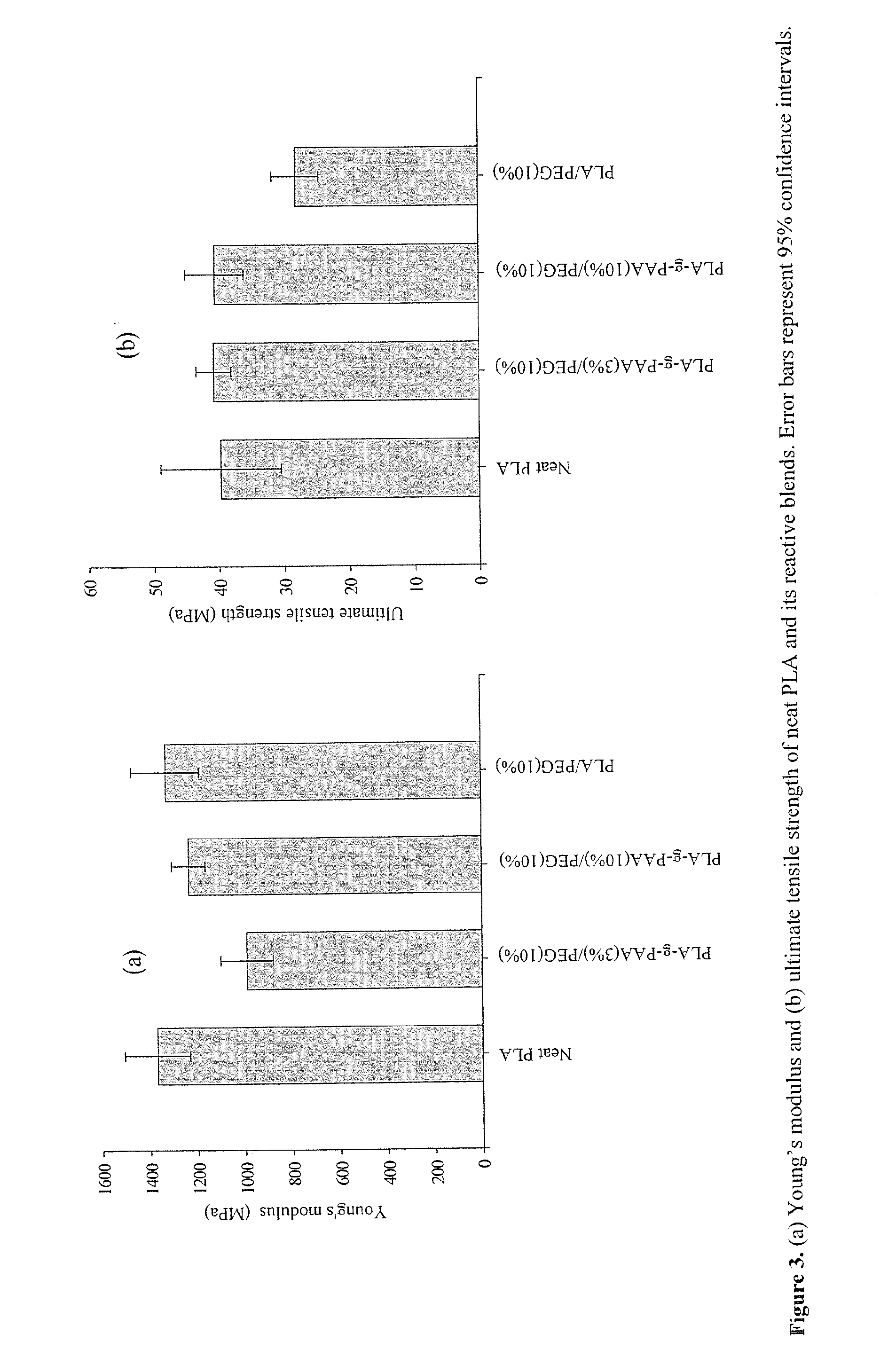Copolymer including polylactic acid, acrylic acid and polyethylene glycol and processes for making the same
a technology of acrylic acid and polyethylene glycol, which is applied in the field of copolymer, can solve the problems of reactive functional groups, poor toughness, limited use of pla in certain applications, etc., and achieve the effect of enhancing processability and enhancing energy saving potential
- Summary
- Abstract
- Description
- Claims
- Application Information
AI Technical Summary
Benefits of technology
Problems solved by technology
Method used
Image
Examples
example 1
Experimental Details
A. Materials.
[0055]PLA pellets (Mn˜110 kDa) were supplied by NatureWorks LLC. Acrylic acid (99.5% w / w) was obtained from Acros Organics (Geel, Belgium) and used as received without further purification. PEG (Mn˜1500 Da) was obtained from Sigma-Aldrich. Chloroform was purchased from VWR. Benzoyl peroxide (BPO) was obtained from Fluka Chemical Corporation.
B. PLA Reactive Blending.
[0056]As shown in the scheme below, a predetermined amount of PLA was dissolved in 140 mL CHCl3 at 100° C. for 1 h followed by addition of predetermined amounts of BPO and acrylic acid. The solution was allowed to stand at 100° C. for 10 min. PEG was added to the solution and kept at 100° C. for an additional hour. The solution was then cooled to room temperature and poured in a glass dish. The solution was kept at room temperature overnight and then transferred to a vacuum oven at 70° C. for 24 h and cooled in the vacuum oven to remove any residual chloroform.
C. Film Extrusion.
[0057]The p...
example 2
Characterization Protocols
A. Mechanical Testing.
[0058]The film samples were stored at room temperature after extrusion for 24 h before mechanical testing. The mechanical properties of the film samples (7.5 cm×1.5 cm×80 μm) were measured using an Applied Test System Inc. (ATS) mechanical tester according to American Society for Testing and Materials Standard (ASTM D882) specifications. A cross-head speed of 1.25 cm / min was used. The measured values averaged for five specimens with ±95% confidence intervals are reported.
B. Dynamic Mechanical Analysis (DMA).
[0059]A SEIKO INSTRUMENTS DMS210U dynamic mechanical analyzer, precalibrated using poly(methyl methacrylate) and steel standards, was used to monitor changes in the viscoelastic response of the material as a function of temperature. A film specimen (2 cm×1 cm×80 μm) was placed in mechanical oscillation at a frequency of 1 Hz and the test was conducted at a heating rate of 2° C. / min.
C. Differential Scanning calorimetry (DSC).
[0060]A ...
example 3
Results
[0062]The scheme shown above represents the PLA reactive blending approach including thermal polymerization of acrylic acid from PLA chains followed by PEG blending. This technology offers PLA toughening with a better balance of properties associated with introduction of reactive acid groups into the PLA matrix. Briefly, PLA was thermopolymerized with acrylic acid using benzoyl peroxide (BPO) thermal initiator followed by blending with PEG in chloroform. The resultant blend was dried and extruded using a twin screw extruder operated in a co-rotating mode.
A. Miscibility and Crystallization Behavior.
[0063]Miscibility and crystallization behavior of the films prepared using this chemistry was evaluated using DMA and DSC, respectively (FIG. 1). Blend miscibility is governed mainly by molecular weight and composition of the constituents. Since higher molecular weight, composition, or both of PEG phase showed a tendency to phase separate, relatively lower molecular weight PEG (Mn˜1...
PUM
| Property | Measurement | Unit |
|---|---|---|
| weight percent | aaaaa | aaaaa |
| elongation at break | aaaaa | aaaaa |
| molecular weight | aaaaa | aaaaa |
Abstract
Description
Claims
Application Information
 Login to View More
Login to View More - R&D
- Intellectual Property
- Life Sciences
- Materials
- Tech Scout
- Unparalleled Data Quality
- Higher Quality Content
- 60% Fewer Hallucinations
Browse by: Latest US Patents, China's latest patents, Technical Efficacy Thesaurus, Application Domain, Technology Topic, Popular Technical Reports.
© 2025 PatSnap. All rights reserved.Legal|Privacy policy|Modern Slavery Act Transparency Statement|Sitemap|About US| Contact US: help@patsnap.com



